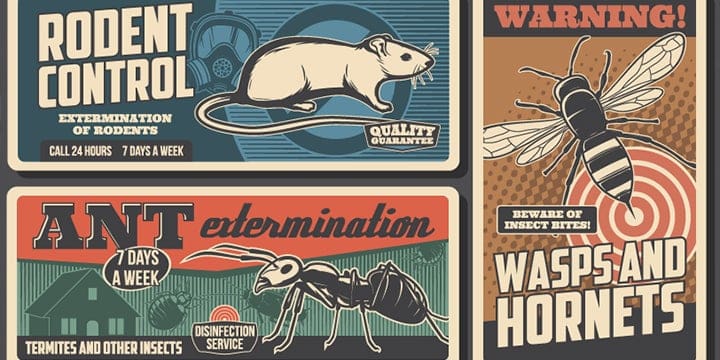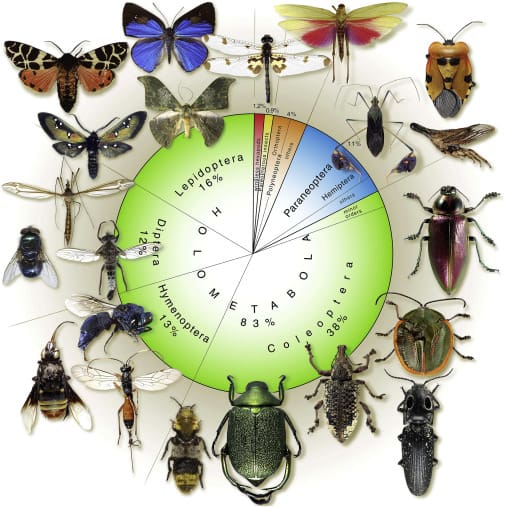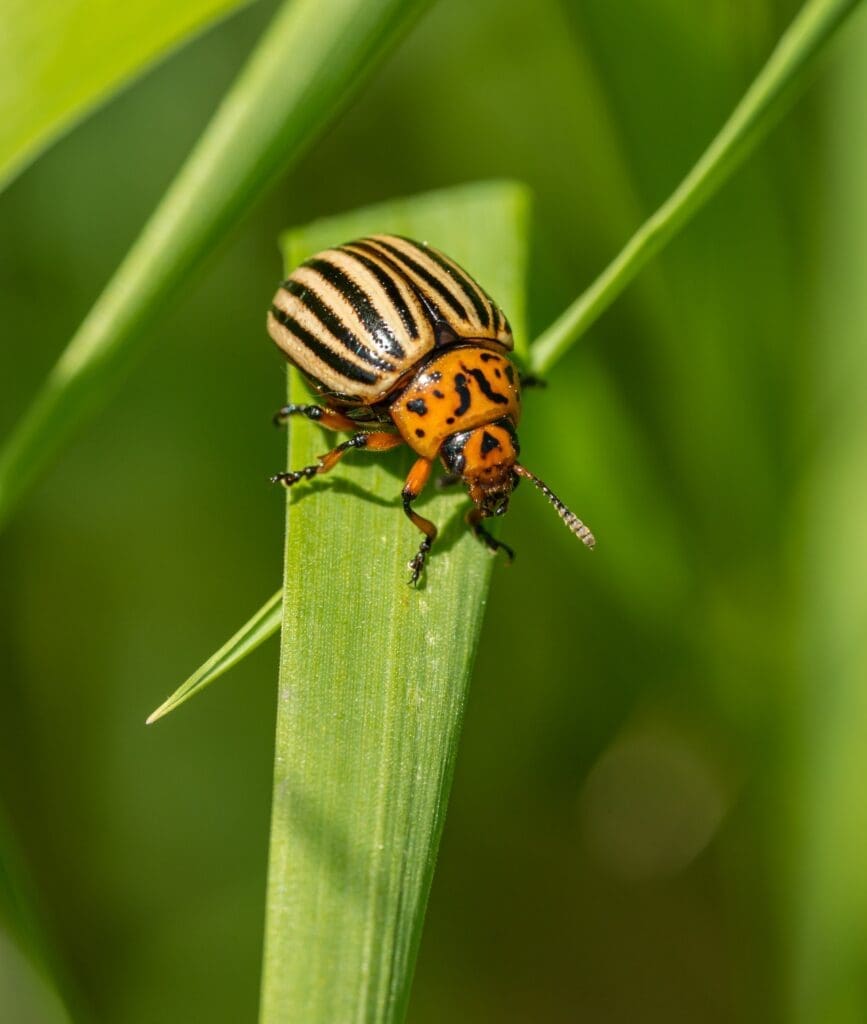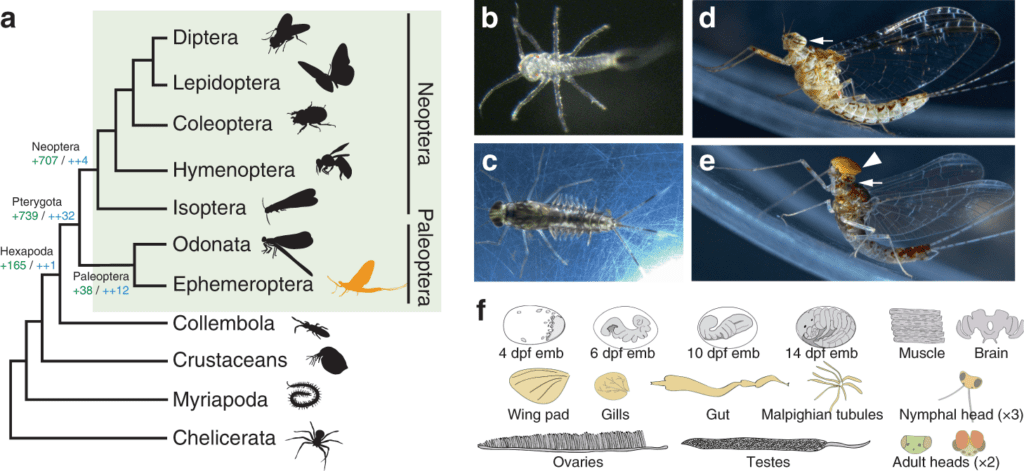Imagine walking through a serene landscape, completely unaware of the silent battles that have taken place over centuries. From ancient civilizations to modern times, pests have evolved and adapted, making their mark on history in ways we could have never imagined. In this article, we will take you on a journey through time, exploring the fascinating evolution of pests from a historical perspective. Join us as we uncover the secrets of their survival and the impact they have had on our lives.

Ancient Times
Early incidences of pest infestations
In the ancient times, humans have always faced challenges with pest infestations. From the earliest agricultural civilizations to the advanced ancient societies, pests have been a persistent problem. In these early times, pests such as insects, rodents, and birds posed significant threats to crops, stored grains, and even human health. These infestations often led to food shortages and diseases, making them major concerns for ancient civilizations.
Methods of pest control in ancient civilizations
Ancient civilizations developed various methods to combat pest infestations. They relied on natural remedies, such as using certain plants with insect-repellent properties or employing specific animals to control pests. For instance, ancient Egyptians used blends of oils and herbs to repel insects, while the ancient Chinese implemented techniques that involved the use of predatory insects to control harmful pest populations. These early civilizations also relied on manual labor for pest control, with people handpicking pests or using traps and barriers to prevent their entry.
Medieval Era
Spread of pests during the Middle Ages
The Middle Ages saw the spread of pests due to increased trade and interaction between different regions. With the growth of cities and increased travel, pests found new opportunities to thrive and spread. Rats, fleas, and lice became common due to unsanitary conditions, leading to outbreaks of diseases such as the Black Death. This era was marked by a significant increase in pest-related problems.
Pest control methods in medieval times
During the medieval times, pest control methods were largely based on folklore and superstition. Various rituals and charms were performed to ward off pests, but they had limited effectiveness. Additionally, cats were introduced as a means to control rodent populations. However, it was not until the Renaissance period that more scientific approaches to pest control emerged.
Exploration and Colonization
Introduction of pests to new regions
Exploration and colonization brought about the introduction of pests to new regions. As explorers and settlers traveled across the globe, they inadvertently carried pests with them. These pests, which included insects, rodents, and even plants, were introduced to ecosystems where they had no natural predators. This uncontrolled introduction disrupted existing ecosystems, leading to imbalances and the emergence of new pest problems.
Efforts to control pest populations during colonization
During the process of colonization, efforts were made to control pest populations to protect crops and human settlements. Strategies included the use of chemical agents, such as sulfur and arsenic, for pest control. Additionally, physical barriers like fences and nets were employed to prevent pest access. These early endeavors laid the groundwork for future advancements in pest control.
Industrial Revolution
Urbanization and its impact on pest populations
The Industrial Revolution brought about significant changes, with a major shift towards urbanization. Rapid urban growth resulted in overcrowded cities, unsanitary conditions, and increased waste, all of which provided ideal breeding grounds for pests. Rat and insect populations thrived in these conditions, leading to public health concerns and the spread of diseases.
Advancements in pest control technology during the Industrial Revolution
The Industrial Revolution also brought advancements in pest control technology. Steam-powered machinery and the invention of new chemical compounds allowed for more effective pest control measures. Insecticides and rodenticides were developed, providing more targeted and efficient methods to combat pests. These technological advancements marked a turning point in pest control practices.

Modern Era
The rise of chemical pest control methods
The modern era saw a significant reliance on chemical pest control methods. Synthetic pesticides became widely available, offering effective and quick solutions to pest infestations. These chemical compounds were formulated to target specific pests and were often used on a large scale in agriculture, public health, and residential areas. While they served their purpose in controlling pests, concerns about their impact on the environment and human health later arose.
Shift towards more environmentally friendly pest control approaches
Due to increasing awareness of the negative effects of chemical pesticides, there has been a shift towards more environmentally friendly pest control approaches in recent times. Integrated Pest Management (IPM) has gained prominence, focusing on a holistic approach that combines various pest control strategies. This includes implementing cultural practices, biological control, and using pesticides only as a last resort. The aim is to minimize environmental impact while effectively managing pest populations.
Pest Adaptation
The ability of pests to develop resistance to control methods
Pests have demonstrated remarkable adaptability over time, developing resistance to control methods. Through natural selection, pests that survived exposure to pesticides or other control measures passed on their resistant traits to future generations. This phenomenon has led to the emergence of pesticide-resistant populations of insects, rodents, and weeds, posing challenges for effective pest control.
Mechanisms of pest adaptation to different environments
Pests adapt to different environments through various mechanisms. Some pests undergo genetic mutations that provide resistance to specific control methods, while others develop behavioral changes to avoid exposure. Additionally, pests can develop rapid reproductive cycles, enabling them to multiply quickly in favorable conditions. These adaptive mechanisms allow pests to not only survive in different environments but also thrive and pose ongoing challenges to pest control efforts.

Climate Change and Pest Distribution
The influence of climate change on the spread of pests
Climate change has been observed to influence the spread of pests. Rising temperatures, changing precipitation patterns, and altered ecological conditions create favorable environments for pests to expand their ranges. Warmer climates may allow pests to survive in previously inhospitable regions, while altered rainfall patterns can affect pest reproduction and migration. Climate change acts as a catalyst for the expansion of pest populations and the introduction of new pest species to different regions.
Impact of changes in temperature and precipitation on pest populations
Changes in temperature and precipitation directly impact pest populations. Warmer temperatures can lead to increased development rates, reproductive rates, and survival rates for pests, resulting in population explosions. Likewise, changes in precipitation affect food availability and habitat suitability for pests, influencing their distribution and abundance. These shifts in environmental conditions create challenges for pest management strategies, as the control methods employed may need to adapt to the changing dynamics of pest populations.
Human-Induced Changes
The role of human activities in creating ideal environments for pests
Human activities play a significant role in creating ideal environments for pests. Factors such as urbanization, deforestation, intensive agricultural practices, and improper waste management contribute to the proliferation of pests. Urban areas with inadequate sanitation create breeding grounds for pests, while deforestation disrupts natural habitats and forces pests into new areas. Intensive agriculture provides abundant food sources for pests, and improper waste management attracts rodents and insects. Understanding the impact of human actions is crucial in developing effective pest control strategies.
Impacts of globalization on pest distribution
Globalization has facilitated the rapid spread of pests across borders. Increased international travel, trade, and transportation have allowed pests to move to new regions where they were previously absent. Pests hitchhike on goods, within shipping containers, or even on vehicles, enabling them to establish new populations in foreign environments. The globalization of pests poses significant challenges for pest control, as coordinated efforts are required to monitor and manage pest movement across different countries.

Emerging Pest Species
Introduction and establishment of new pest species
The introduction and establishment of new pest species is an ongoing concern. Invasive pests can have devastating impacts on ecosystems, agriculture, and human health. Global trade and travel have inadvertently introduced pests to new regions, where they find favorable conditions to establish themselves. These emerging pests often lack natural predators, enabling them to rapidly multiply and outcompete native species. Effective management and control strategies are vital to prevent the establishment and spread of these new pest species.
Challenges in managing and controlling emerging pests
Managing and controlling emerging pests present unique challenges. In many cases, there is limited knowledge about the biology, behavior, and optimal control methods for these new pest species. Integrated approaches that incorporate multiple control strategies, including biological control, cultural practices, and targeted pesticide application, are often necessary. Additionally, close monitoring and early detection are crucial to prevent the establishment of emerging pests and mitigate their impacts.
Future Perspectives
Technological advancements in pest management
The future of pest management holds promising technological advancements. There is ongoing research and development of innovative pest control methods, such as biological control agents, genetic engineering, and precision agriculture. These advancements aim to provide more efficient, targeted, and environmentally friendly solutions to pest problems. High-tech tools, including drones, sensors, and data analytics, are being utilized to enhance monitoring and early detection capabilities. Continued investments in research and development will shape the future of pest management.
Prediction of pest trends and potential control strategies
Advancements in data analysis and modeling allow for improved prediction of pest trends and the development of potential control strategies. By analyzing historical data, weather patterns, and pest biology, researchers can forecast pest outbreaks and identify areas at high risk. This information enables proactive measures, including early warning systems, targeted control interventions, and pest management plans. With increased understanding and forecasting capabilities, the pest control industry can respond more effectively and efficiently to emerging pest threats.
In conclusion, the historical perspective of pest control highlights the ongoing battle between humans and pests. From ancient times to the modern era, pests have posed significant challenges and required innovative solutions. Through technological advancements and a better understanding of pest adaptation and distribution, humans have developed more effective pest control methods. However, the complexity of pest problems, exacerbated by climate change and human-induced changes, necessitates ongoing research, development, and implementation of integrated pest management strategies. With a proactive and environmentally conscious approach, we can effectively manage pests and ensure the well-being of our ecosystems, agriculture, and human health.


I am Randy, the author behind PestControld.com. Drawing from decades of experience, I aim to provide valuable insights, expert advice, and practical recommendations to help you make informed decisions when assessing viable pest control solutions.